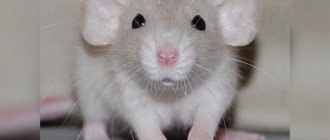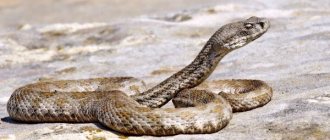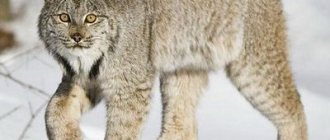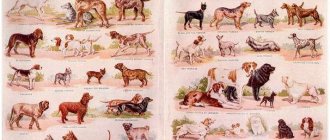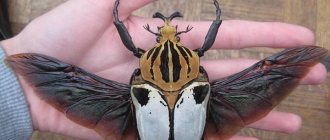The most developed, most intelligent monkeys are anthropoids. That’s how the word begs to be called – humanoid. And all because they have a lot in common with our species. We can talk about apes a lot, for a long time and with passion, simply because they are really close to our species. But first things first.
There are 4 types of these animals:
- gorillas,
- orangutans,
- chimpanzee,
- bonobos (or pygmy chimpanzees).
Bonobos and chimpanzees are very similar to each other, but the remaining two species are not at all similar to each other or to chimpanzees. However, all apes have much in common, for example:
- they have no tail,
- similar structure of the hands of the upper limbs and human hands,
- the volume of the brain is very large (at the same time, its surface is full of grooves and convolutions, and this indicates a high level of intelligence of these animals)
- there are 4 blood groups,
- In medicine, bonobo blood is used for transfusion to a person with a suitable blood type.
All these facts indicate the “blood” relationship of these creatures with people.
Both species of gorillas and chimpanzees live in Africa, and this continent, as you know, is considered the cradle of all humanity. The orangutan, according to scientists, our most genetically distant relative among the great apes, lives in Asia.
Evolution of monkeys
Apes are the closest relatives of humans.
They have 32 teeth and no tail. Their limbs resemble human arms and legs, but their feet are not adapted to walking on the ground for long periods of time. Despite this, these animals can still move on their hind limbs. Another “human” trait of great apes is their flat chest. It is possible that humans and African apes had common ancestors. Great apes, like primitive man, are able to use simple tools, such as stones and sticks, to get food.
Common ancestor
To say that man descended from a monkey is considered incorrect from the point of view of modern anthropology - the science of man and his origin. Man as a species evolved from the first humans (they are usually called hominids), who were a radically different biological species than monkeys. The first human being, Australopithecus, appeared 6.5 million years ago, and the ancient monkeys, who became our common ancestor with modern apes, appeared about 30 million years ago.
Methods for studying bone remains - the only evidence of ancient animals that have survived to our time - are constantly being improved. The oldest ape can often be classified by a fragment of a jaw or a single tooth. This leads to the fact that more and more new links appear in the scheme of human evolution, complementing the overall picture. In the 21st century alone, more than a dozen such objects have been found in various regions of the planet.
Great and little monkeys
For certain reasons, some scientists tend not to include gibbons in the group of great apes. Today, the gibbon family is included in the superfamily of apes. Gibbons live exclusively in Asia from the Indian state of Assam to Indochina. In some species, males and females have different colors. Male Hoolock Gibbons, Hoolock Gibbons, and Kloss's Gibbons have black coats, while their females and cubs have light brown or gray coats. Large apes in Asia are represented only by the orangutan, whose range is limited to the forests of Kalimantan and Sumatra. Chimpanzees, pygmy chimpanzees and gorillas are found in West and Central Africa. All large apes sleep in nests that they build in trees, and only gorillas sleep on the ground.
Gibbons have calluses on their buttocks, so they can sleep while sitting on hard tree branches. Apes, who do not have such calluses, sleep lying down in a nest, which is lined with leaves. Apes live quite a long time: gibbons - about 25 years, large species - up to 50 years.
Classification
Apes are classified in the following taxonomic hierarchy:
- Domain: Eukaryotes;
- Kingdom: Animals;
- Phylum: Chordata;
- Class: Mammals;
- Order: Primates;
- Superfamily: Hominoids.
The term ape refers to a group of primates that includes the families: hominids (chimpanzees, gorillas, orangutans) and gibbons. The scientific name Hominoidea refers to apes (chimpanzees, gorillas, orangutans, gibbons) as well as humans (i.e., ignoring the fact that humans prefer not to call themselves apes).
The gibbon family is the most diverse, with 16 species. Another family, the hominids, is less diverse and includes: chimpanzees (2 species), gorillas (2 species), orangutans (3 species) and humans (1 species).
Methods of movement of monkeys
The smallest representatives of the group of apes are gibbons, whose mass reaches 8 kg. With extraordinary ease, they deftly jump along tree branches. When moving, monkeys cling to branches only with their hands. Swinging like a pendulum, they can jump up to ten meters. When jumping, monkeys reach speeds of about 16 kilometers per hour. Hanging on a branch with one arm and swinging, gibbons move far forward, using both paws when landing. They have very mobile shoulder joints that rotate 360°. Most apes are good tree climbers, choosing thick branches that can support their body weight. Orangutans distribute their weight on all four limbs; they do not jump. Pygmy chimpanzees, or bonobos, behave like real acrobats in the treetops. All apes have long arms and rather short hind limbs. Most of them move on the ground on all fours. Gorillas and chimpanzees, as well as bonobos, walk using the fingers of their forelimbs, while orangutans rely on their fists.
Gigantopithecus
In 1936, several unusual monkey teeth, vaguely similar to human ones, accidentally fell into the hands of paleontologists. They became the reason for the emergence of a version that they belonged to creatures from an unknown evolutionary branch of human ancestors. The main reason for the emergence of such theories was the huge size of the teeth - they were twice the size of gorilla teeth. According to experts’ calculations, it turned out that their owners were over 3 meters tall!
After 20 years, a whole jaw with similar teeth was discovered, and the ancient giant apes turned from an eerie fantasy into a scientific fact. After more accurate dating of the finds, it became clear that huge apes existed at the same time as Pithecanthropus (Greek “pithekos” - monkey) - ape-men, that is, about 1 million years ago. It was suggested that they were the direct predecessors of humans, involved in the disappearance of the largest apes that existed on the planet.
Sounds made by monkeys
The largest gibbon, the siamang, has a throat pouch that it can inflate. The leathery sac plays the role of a resonator, which amplifies the sound. Usually the monkey makes sounds that resemble a dull bark. Members of the same herd within their territory also communicate using sound signals, and the females are the most active - their first long barking sounds gradually shorten until they completely subside, and then the monkeys begin the “conversation” again. The males respond with low calls that turn into roars. Obviously, the cry serves siamangs not only to mark the boundaries of the territory, but is an element of a complex communication system. Adult male orangutans also have throat sacs called resonators. Their loud voices can be heard at a distance of one kilometer. The male gorilla, sensing danger, rises to his hind limbs, beats his chest with his hands and shouts: “tok-tok-tok.” This behavior is called demonstrating. Chimpanzees and pygmy chimpanzees (bonobos) communicate with each other using cries, grunts, squeals and snorts. The chimpanzee's danger call is a very high-pitched, loud sound that can be heard over a long distance.
Herbivorous giants
An analysis of the environment in which fragments of giant bones were found, and an examination of the jaws and teeth themselves, made it possible to establish that the main food for Gigantopithecus was bamboo and other vegetation. But there were cases of discovery in caves where the bones of monster monkeys, horns and hooves were found, which made it possible to consider them omnivores. Giant stone tools were also found there.
This led to a logical conclusion: Gigantopithecus, an ancient ape up to 4 meters tall and weighing about half a ton, is another unrealized branch of hominization. It was established that the time of their extinction coincided with the disappearance of other anthropoid giants - Australopithecus Africanus. A possible reason is climatic cataclysms that became fatal for large hominids.
According to the theories of the so-called cryptozoologists (Greek “cryptos” - secret, hidden), individual specimens of Gigantopithecus have survived to this day and exist in areas of the Earth that are difficult for people to reach, giving rise to legends about the “Bigfoot”, Yeti, Bigfoot, Almasty and so on.
Ape food
Gorillas eat leaves, fruits, bark, mushrooms, buds and shoots. One subspecies, the lowland gorilla, found in West Africa, eats insects and their larvae. Gibbons feed mainly on ripe fruits. Orangutans eat fruits, leaves, insects, and bird eggs. Chimpanzees are omnivorous apes. The basis of their diet is fruits, leaves and seeds, but chimpanzees readily eat ants, termites, larvae and bird eggs. Sometimes they destroy bee nests by eating larvae and honey. Chimpanzees hunt baby antelopes, baboons and wild pigs. They crack nuts with stones.
Nutrition
The diet of hominoids includes leaves, seeds, nuts, fruits and a limited number of animals. Most species are omnivores, but fruits are the preferred food. Chimpanzees and orangutans primarily eat fruit. When gorillas lack fruit at certain times of the year or in certain regions, they feed on shoots and leaves, often bamboo. Gorillas are well adapted to chew and digest such a low-nutrient food, but these primates still prefer fruit when it is available. Hominoid teeth are similar to those of Old World monkeys, although they are especially large in gorillas.
Reproduction
Apes enter puberty late. Gibbons begin to mate at the age of 6-7 years. A female chimpanzee gives birth to her first baby between the ages of 6 and 9 years. Males of large apes reach sexual maturity somewhat later - at 7-8 years. Female chimpanzees mate with different males from the herd. In gorillas, only the leader of the herd has the right to mate with all females. Orangutans live alone, so the female mates with the male she meets during the breeding season. Pregnancy lasts approximately 7 months for gibbons and 9 months for gorillas. The female gives birth to one cub; twins are rarely born. Gibbons feed their cubs milk for several months, larger monkeys longer.
A baby chimpanzee often feeds on its mother's milk for 4 years, and then lives for a long time with its mother, who carries it long distances on her back. Female gibbons usually give birth to cubs every 2 years, gorillas every 2-3 years, and chimpanzees every 5-6 years. A baby in a herd of gorillas feels safe because all members of the herd protect him from enemies.
Behavior
Like most primates, hominoids form social groups, the structure of which varies among species. Gibbons form monogamous pairs. Orangutans are an exception to the social norm of primates; they lead a solitary life.
Chimpanzees form groups that can number from 40 to 100 individuals. Large groups of chimpanzees break up into smaller groups when fruit becomes less available. If small groups of dominant male chimpanzees go off to find food, the females will often copulate with other males in their group.
Gorillas live in groups of 5 to 10 or more individuals, but they remain together regardless of the availability of fruit. When fruits are difficult to find, they resort to eating leaves and shoots. Because gorillas stay together, the male is able to monopolize the females in his group. This fact is associated with greater sexual dimorphism in gorillas than chimpanzees. In both chimpanzees and gorillas, groups include at least one dominant male, with females leaving the group in adulthood.
Habitats
In America, primates with wide nostrils (broad-nosed monkeys) and elongated tails that easily cling to branches are common. A well-known representative of the broad-nosed monkey is the spider monkey, which received this name because of its long limbs.
Narrow-nosed primates live in Africa and tropical Asia. The tail, for example, in monkeys, does not play a significant role during climbing, and some species are completely deprived of it. Baboons prefer to live on the ground, moving on all fours.
Dimensions
The order of primates contains a wide variety of species, differing significantly in size and body weight.
| Type name | Body length, cm | Weight, kg |
| Gorilla | 175 | 150 |
| Orangutan | 150 | 100 |
| baboon anubis | 75 | 25 |
| Drill | 70 | 20 |
| Gulman | 60 | 11 |
| Piebald tamarin | 28 | 0,420 |
| Wistity | 18 | 0,25 |
Perception of beauty
The researchers noted, not without pleasure, that monkeys love to draw. In this case, primates will act quite carefully. If you give a monkey paper, a brush and paints, then in the process of depicting something, he will try not to go beyond the edge of the sheet. In addition, animals are quite skillful in dividing the plane of paper into several parts. Many scientists consider the paintings of primates to be strikingly dynamic, rhythmic, full of harmony in both color and form. More than once it was possible to show the work of animals at art exhibitions. Researchers of primate behavior note that monkeys have an aesthetic sense, although it manifests itself in a rudimentary form. For example, while observing animals living in the wild, they saw how individuals sat at sunset on the edge of the forest and watched the sun set in fascination.
What do they eat?
The monkeys' diet consists of plant foods: fruits of fruit trees, berries, leaves, juicy tubers. Some primates can eat insects, worms and other small invertebrates.
In langurs and other thin-bodied monkeys that eat hard leaves, the stomach is structured in the same way as in ruminant mammals: it has several partitions that divide the internal space into sections for more thorough digestion of plant food.
RHINOCEROS
